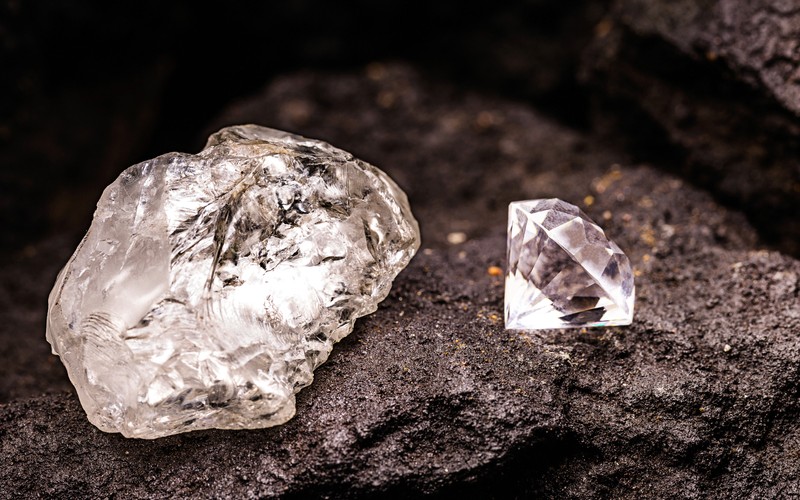About Natural Diamonds
Diamond are formed under high temperature and pressure conditions that exist only about 100 miles beneath the earth’s surface. Diamond’s carbon atoms are bonded in essentially the same way in all directions. Another mineral, graphite, also contains only carbon, but its formation process and crystal structure are very different. Graphite is so soft that you can write with it, while diamond is so hard that you can only scratch it with another diamond.
Diamond Description
Diamond’s characteristic chemical composition and crystal structure make it a unique member of the mineral kingdom.
Diamond is the only gem made out of a single element: It is typically about 99.95 percent of carbon. The other 0.05 percent can include one or more trace elements, which are atoms that aren’t part of the diamond’s essential chemistry. Some trace elements can influence its color or crystal shape.
History Of Natural Diamonds
The world’s love of diamonds had its start in India, where diamonds were gathered from the country’s rivers and streams. Diamonds flow from mines through cutting centers, and ultimately to retail customers. The diamond’s rarity, beauty, and strength make it a fitting symbol of the resilience and longevity of marriage. In addition to engagement rings, diamonds are traditionally given as gifts to commemorate the milestone of the sixtieth anniversary. With their rich history, sense of permanence, and lustrous brilliance, diamonds are a natural choice to signify a lasting union.


